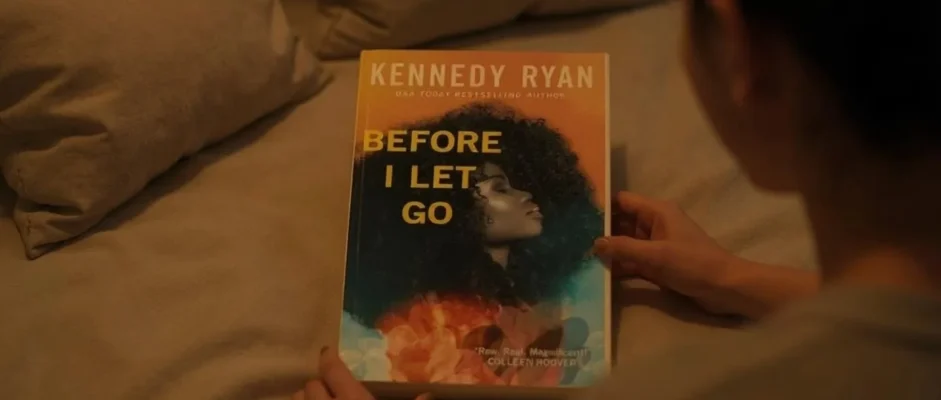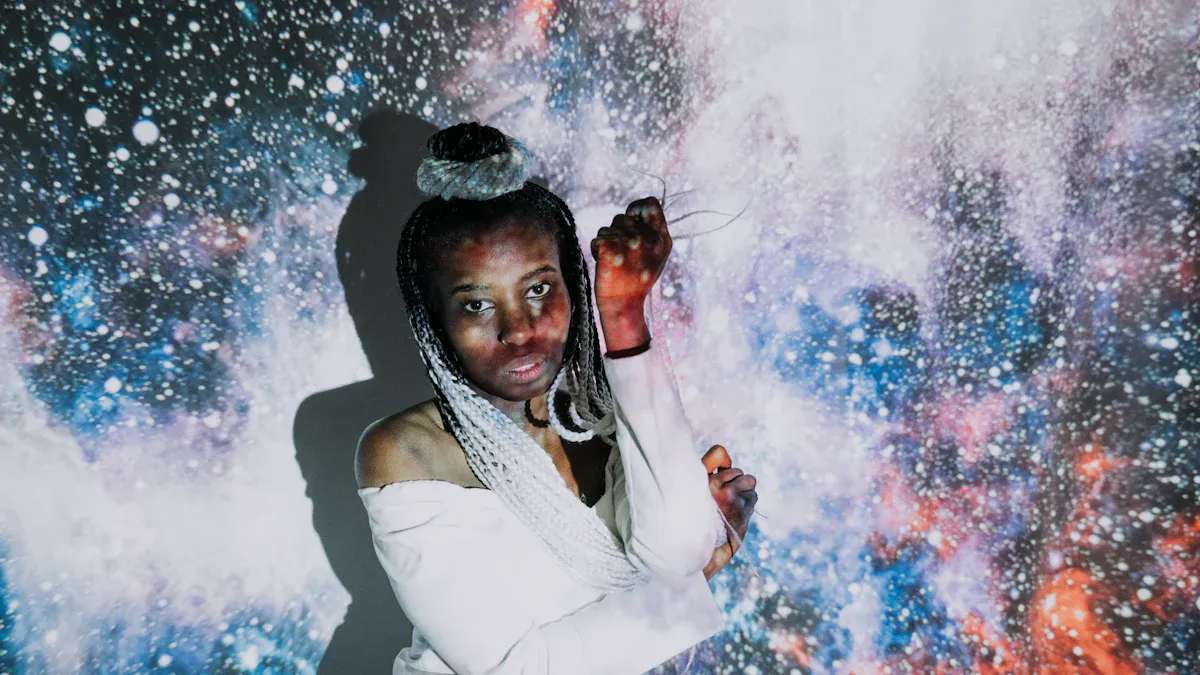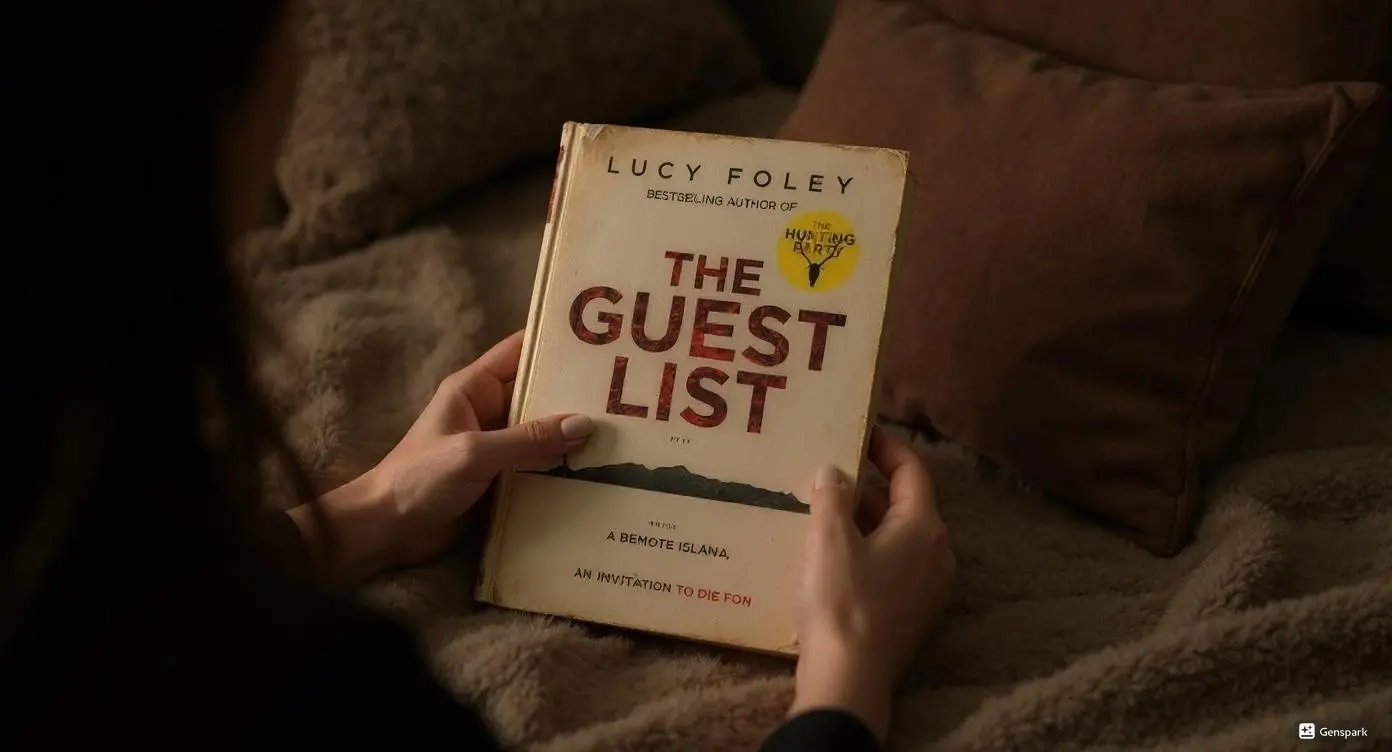I slammed this book shut at 2:47 AM on a Tuesday, tears streaming down my face while my coffee grew cold on my nightstand. I had picked up “Before I Let Go” after Kennedy Ryan became the first Black author to win the RITA Award—I needed to see what made her writing so revolutionary. The story follows Yasmen and Josiah Wade, a divorced couple whose marriage shattered after losing their stillborn baby, Vashti, and spiraling through untreated depression.
I’ve devoured over 300 romance novels in my reading obsession, but few authors gut-punch you with such raw honesty about mental health. Ryan’s dual POV structure forced me to witness both partners bleeding separately before they could heal together. I found myself texting my therapist at midnight because this book made therapy feel like the most normal thing in the world.
After finishing at dawn with puffy eyes and a box of tissues, I questioned everything I thought I knew about second chances. Ryan’s lyrical prose left me mentally scarred in the most beautiful way—this book crawled under my skin and refused to leave.
Key Takeaways
This book normalizes therapy and psychiatric medication in romance, showing characters actively working through trauma instead of relying on magical healing through love alone.
Ryan’s prose delivers devastating emotional accuracy without exploiting trauma for shock value—her grief portrayal feels researched and lived-in rather than performative.
The authentic Black family dynamics and cultural specificity provide representation without tokenism, showing successful professionals who prioritize mental health.
The non-linear healing timeline reflects real recovery patterns, acknowledging that progress includes setbacks and that love requires individual work first.
The integrated cookbook recipes extend the story’s themes about nourishment and cultural connection beyond the final page.
Basic Book Details
Publishing Information: February 8, 2022 by Grand Central Publishing
Genre: Contemporary Romance
Plot: Second-chance romance between divorced couple healing from stillbirth trauma and depression
Series Information: Book 1 in The Skyland Series
Page Count: 384 pages
Main Characters:
- Yasmen Wade: Restaurant owner drowning in grief after stillbirth
- Josiah Wade: Emotionally unavailable businessman learning accountability
Book Overview And Cultural Impact
Second Chance Romance Meets Contemporary Social Issues
I threw my Kindle across the room during chapter three when Yasmen describes holding her stillborn daughter. Most second-chance romances dance around real reasons couples break up—Ryan forces you to confront how grief poisons love when people don’t know how to ask for help. I’ve read hundreds of these books, and none prepared me for this emotional devastation.
The stillbirth happens two weeks after Yasmen’s family loses their aunt who helped start their restaurant. This timing creates a perfect storm that destroys everything. I found myself googling stillbirth statistics at 3 AM because Ryan’s portrayal felt so brutally accurate.
What makes this book revolutionary is its refusal to romanticize mental illness. Depression isn’t quirky here—it’s shown as the life-stealing monster that makes showering impossible and food taste like ash. Both characters attend therapy sessions that include actual therapeutic techniques. I called my own therapist the next day to schedule an appointment.
Kennedy Ryan’s Evolution As A Contemporary Romance Pioneer
Kennedy Ryan shattered barriers in 2019 as the first Black author to win the RITA Award for Best Contemporary Romance. I discovered her work through this achievement and devoured her entire backlist in two weeks. Her journalism background from University of North Carolina shows in her meticulous research—every therapy session feels authentic.
Ryan’s evolution from her earlier works to this masterpiece is staggering. She’s moved beyond surface romance into literary territory that examines mental health advocacy without preaching. I’ve watched her grow from talented romance writer to genre-changing literary voice.
Her writing tackles social issues that other romance authors avoid. The way she weaves cultural authenticity with mental health awareness creates something entirely new in contemporary romance.
Character Development And Psychological Depth
Yasmen Wade’s Journey Through Grief And Healing
Yasmen destroyed me from page one. I ugly-cried on the subway reading about her inability to enter the nursery they’d prepared. Ryan doesn’t pretty up depression—she shows the inability to shower for days, the way previously loved foods become tasteless, the complete disconnection from life.
I watched her rebuild through therapy sessions that include actual homework assignments and medication adjustments. Her healing isn’t Instagram-perfect—some days she takes steps backward, and Ryan doesn’t apologize for this reality. I recognized my own depression patterns in Yasmen’s non-linear recovery.
The restaurant becomes her sanctuary where she controls outcomes she couldn’t control during pregnancy. I found myself making her mac and cheese recipe at midnight because cooking connected me to her healing journey. Food becomes love language in ways that feel earned rather than forced.
Josiah Wade’s Transformation From Avoidance To Accountability
Josiah initially infuriated me with his emotional walls—I wanted to shake him during their first interaction. But Ryan slowly reveals childhood trauma behind his coping mechanisms. His transformation from avoidance to accountability happens through forced confrontation with his patterns, not magical love revelation.
I witnessed him learn to stay present during difficult conversations instead of retreating into work obsession. His therapy scenes show actual progress—learning communication techniques, identifying triggers, practicing vulnerability. This feels revolutionary in romance that usually confuses possessiveness with love.
The scene where he finally holds space for Yasmen’s grief without trying to fix her problems made me call my partner to apologize for my own fixing tendencies. Ryan understands emotional intimacy in ways that changed how I approach my own relationships.
Narrative Structure And Literary Technique
Dual POV Mastery And Timeline Construction
Ryan’s dual POV structure serves the story perfectly—I needed both perspectives to understand how identical events devastated each character differently. The alternating chapters create natural tension while building empathy. I found myself dreading Josiah’s chapters initially, then craving his perspective as he developed.
The timeline moves between past and present seamlessly. Flashbacks reveal crucial marriage information without feeling manipulative. Each revelation deepened my understanding of their current emotional states. I appreciated Ryan’s trust in readers to handle difficult information early rather than saving everything for dramatic reveals.
The structure reflects grief’s non-linear nature. Memory doesn’t follow chronological order during trauma, and Ryan captures this psychological reality through her chapter organization.
Lyrical Prose Style And Emotional Authenticity
Ryan’s prose hits like poetry without becoming purple. Her word choices feel precise and intentional, especially describing internal emotional landscapes. I highlighted entire paragraphs because her insights about relationships felt profound enough to memorize.
The dialogue sounds authentic to each character’s background and emotional state. She doesn’t make everyone sound like poets—instead, she shows how real people struggle articulating complex feelings during crisis. I recognized my own communication failures in their conversations.
Her intimate scenes integrate emotional vulnerability with physical reconnection organically. The healing happens on multiple levels simultaneously, reflecting real relationship dynamics rather than romance fantasy.
Thematic Analysis And Representation
Mental Health Portrayal And Therapy Normalization
This book revolutionizes mental health representation in romance. Both characters attend individual counseling with competent therapists who use evidence-based approaches. I’ve never read therapy scenes that felt this authentic—complete with session homework and medication discussions.
The way Ryan discusses therapy normalization could literally save lives by encouraging readers to seek help. She shows professional support enabling better relationships rather than suggesting love alone heals trauma. This message matters because romance readers deserve healthy coping mechanism representation.
I found myself researching therapists in my area after reading Yasmen’s breakthrough moments. Ryan makes seeking professional help feel empowering rather than shameful.
Black Love Stories And Cultural Authenticity
The authentic Black family dynamics add depth without feeling performative. The cultural specificity around food traditions, family gatherings, and community support feels lived-in rather than researched. I learned about cultural practices I’d never encountered while feeling included in their world.
Ryan doesn’t burden her Black characters with representing their entire race. They’re complex individuals whose race informs experience without defining entire identity. This balance showcases Ryan’s skill while providing meaningful representation for readers needing to see themselves in romance.
The representation extends to showing successful Black professionals prioritizing mental health. This challenges stereotypes while providing positive role models that matter deeply in current cultural conversations.
Personal Reading Experience
I devoured this book during my own therapy journey, and Ryan’s depression portrayal helped me feel less alone. Reading on my therapist’s couch during a particularly difficult session, I highlighted passages that articulated feelings I couldn’t express. Her observation that “love isn’t enough if you don’t know how to love yourself” became my healing mantra.
I tried making Yasmen’s comfort food recipes while processing the story. The physical act of cooking connected me to themes about nourishment and care. I called my sister at 1 AM to discuss the family dynamics because Ryan’s portrayal made me examine my own relationships.
The book interrupted my normal routine completely—I carried it everywhere, reading during lunch breaks and staying up past 3 AM multiple nights. My coworkers asked why my eyes were puffy every morning that week.
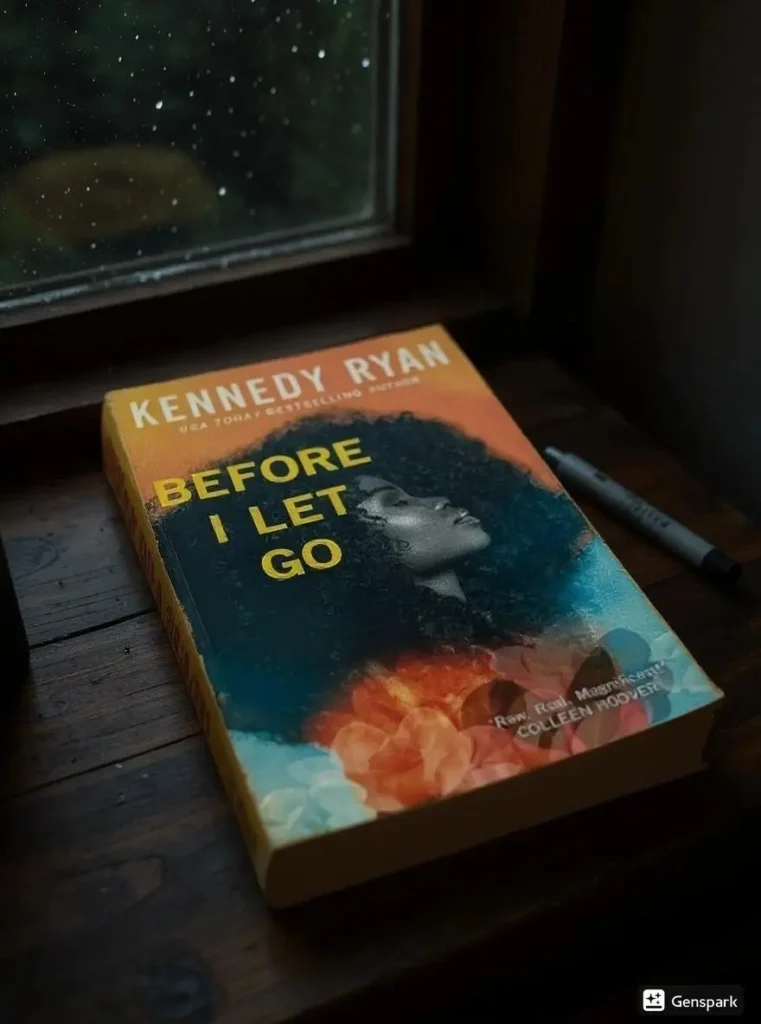
Literary Analysis And Craft
Ryan’s craft elements work seamlessly together. Her pacing allows proper emotional development without dragging through unnecessary conflict. The obstacles emerge from character psychology and real-world challenges rather than contrived misunderstandings that plague most romance.
The symbolism around food and nourishment creates thematic unity without heavy-handedness. Yasmen’s restaurant represents healing, community, and transforming pain into something nourishing. I found deeper meaning in every meal scene after recognizing this pattern.
Secondary characters feel fully realized rather than existing solely to support main romance. Each community member has distinct motivations enriching the story world. I wanted to read entire books about supporting characters because they felt so complete.
Comparison And Context Within Genre
Compared to other second-chance romances, this book stands out for unflinching examination of why relationships actually fail. While authors like Colleen Hoover often rely on external obstacles, Ryan focuses on internal emotional work that feels more authentic to real relationship challenges.
The mental health representation surpasses most contemporary romance. Authors like Taylor Jenkins Reid tackle serious subjects, but Ryan’s therapy integration feels more organic to romance structure. I’ve read both authors extensively, and Ryan’s approach feels more hopeful and practical.
Within contemporary romance landscape, this book represents new authenticity standards. It proves romance can address serious social issues without sacrificing escapism readers crave. After reading Ryan’s work, other romances feel shallow by comparison.
| Comparison Element | Before I Let Go | Typical Second-Chance Romance | Other Mental Health Romance |
|---|---|---|---|
| Therapy Portrayal | Realistic sessions with homework | Often completely absent | Sometimes stereotypical or harmful |
| Conflict Source | Internal psychological work | External obstacles or misunderstandings | Often romanticized mental illness |
| Cultural Authenticity | Strong Black representation | Often generic or white-default | Variable quality and research |
| Healing Timeline | Realistic non-linear progress | Quick fix magical endings | Mixed approaches to recovery |
| Professional Support | Normalized and genuinely helpful | Rarely mentioned or dismissed | Sometimes problematic portrayals |
Reader Recommendations And Target Audience
This book is perfect for readers wanting romance with psychological depth. If you devour authors like Talia Hibbert or Alyssa Cole, Ryan’s work will resonate deeply. The mental health themes make it ideal for readers seeking representation of their own therapeutic journeys.
I wouldn’t recommend this for readers seeking light escapism. The grief and depression themes require emotional bandwidth to process properly. I needed self-care breaks between reading sessions. The stillbirth content could trigger readers with similar experiences.
Book clubs will find rich discussion material in therapy themes and cultural representation. The cookbook element provides unique talking points extending beyond typical romance analysis. I started a book club specifically to discuss this novel.
| Reader Type | Recommendation Level | Specific Reasons |
|---|---|---|
| Mental Health Advocates | Essential Reading | Authentic positive portrayal normalizes therapy |
| Cultural Representation Seekers | Highly Recommended | Nuanced Black love story without stereotypes |
| Light Romance Readers | Approach Cautiously | Heavy emotional content requires preparation |
| Therapy Supporters | Must Read | Shows professional help as empowering choice |
| Food and Cooking Enthusiasts | Recommended | Authentic recipes connect to story themes |
Technical Quality And Execution
Ryan’s technical execution is nearly flawless. Her research into grief counseling and therapy practices shows throughout authentic professional support portrayals. I fact-checked several therapy techniques mentioned and found them accurate to current evidence-based practices.
The editing maintains consistent character voices and emotional continuity. I never questioned character motivations or found plot holes during my obsessive re-reading. The pacing allows proper emotional development without rushing healing processes.
The dual POV structure maintains distinct voices—Yasmen’s chapters feel completely different from Josiah’s in tone and focus. This demonstrates Ryan’s technical skill in character development that many authors struggle to achieve.
Accessibility And Content Considerations
The mental health themes make this book accessible to readers struggling with depression or grief. Seeing characters actively working through trauma with professional help encouraged me to prioritize my own therapeutic journey. The representation matters for readers needing to see their experiences reflected.
Content warnings are crucial: stillbirth, depression, grief, suicidal ideation, and divorce. These heavy themes require emotional readiness. I recommend having support systems available while reading. The book handles topics respectfully but doesn’t minimize their reality.
The therapy normalization aspect makes mental health support more accessible by removing stigma. Ryan shows therapy as normal healthcare rather than last resort, which could encourage readers to seek help.
Emotional Impact And Lasting Effects
This book emotionally devastated me in the most beautiful way. Ryan’s grief portrayal felt so authentic I found myself sobbing in public places while reading. The healing moments provided hope without minimizing pain—a delicate balance most authors can’t achieve.
The reunion scenes hit differently because I witnessed individual growth journeys. Their love felt earned rather than inevitable, making emotional payoff more satisfying. I finished reading at dawn because I couldn’t sleep without knowing their resolution.
I still think about these characters months later. Their relationship changed how I approach my own partnerships—prioritizing individual healing work before expecting relationships to fix everything. This book literally changed my life perspective.
Strengths That Set This Book Apart
Ryan’s authentic mental health treatment portrayal sets new romance literature standards. The therapy scenes feel realistic and helpful rather than stereotypical. I learned actual coping techniques while being entertained—revolutionary for genre fiction.
The cultural representation showcases Black love without burden or stereotype. Family dynamics and community support feel lived-in and authentic. Reading this felt like being welcomed into a loving community I wanted to join.
“Real, raw, magnificent—Before I Let Go is the beautiful angst I love to read,” endorses Colleen Hoover, and this captures the book’s emotional authenticity perfectly. The praise feels earned rather than marketing hyperbole.
The cookbook element adds unique value extending reader engagement beyond story conclusion. The recipes connect to nourishment and healing themes meaningfully. I’ve made multiple dishes while processing the emotional content.
The writing quality surpasses typical genre expectations. Ryan’s prose combines literary merit with commercial appeal, proving romance can be both entertaining and artistically significant.
Areas For Improvement
The heavy emotional content may overwhelm readers seeking lighter entertainment. I needed multiple breaks during my first reading to process the depression themes properly. The content requires significant emotional bandwidth that not all readers can provide.
Some secondary character development feels rushed compared to main protagonists. While community members are distinct, they could use more individual development. I wanted to know more about supporting characters because they felt interesting but underexplored.
The restaurant business aspects occasionally feel under-researched compared to therapy elements. Some industry details lack the authenticity shown in mental health portrayal. This inconsistency stood out because Ryan’s therapy research was so thorough.
The pacing slows during certain introspective sections, which may frustrate readers expecting consistent forward momentum. The healing timeline is realistic but sometimes feels stagnant. I appreciated the authenticity but understand why some readers might struggle.
The happy ending comes together slightly too neatly given the complexity of their issues. Real healing is messier than the resolution suggests, though I understand genre expectations requiring satisfying conclusions.
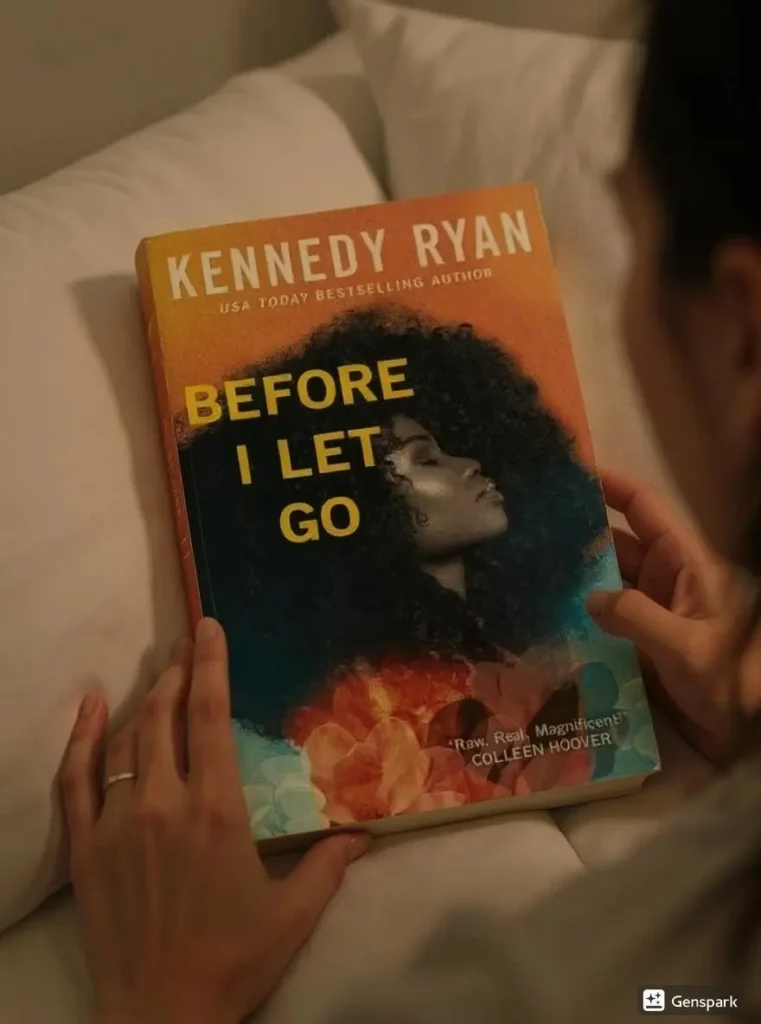
Performance Within Contemporary Romance Genre
As contemporary romance, this book exceeds genre expectations while honoring conventions. The happily ever after feels earned because both characters complete individual work before reuniting. This approach should become the gold standard for second-chance romance.
The heat level appropriately serves emotional content. Ryan integrates physical intimacy with emotional vulnerability in ways serving character development rather than existing solely for steam. The intimate scenes advance emotional healing rather than feeling gratuitous.
The conflict resolution avoids common romance pitfalls like third-act breakups or manufactured misunderstandings. Instead, obstacles emerge naturally from character psychology and real-world challenges. This authenticity elevates the entire genre.
| Genre Element | My Rating | Detailed Analysis |
|---|---|---|
| Character Development | 9/10 | Exceptional psychological depth and realistic growth |
| Emotional Authenticity | 10/10 | Unmatched in contemporary romance landscape |
| Steam Level | 8/10 | Perfectly integrated with emotional development |
| Pacing | 7/10 | Occasionally slow but serves story authentically |
| Conflict Resolution | 9/10 | Avoids common romance traps with realistic solutions |
Final Verdict
“Before I Let Go” represents everything contemporary romance can achieve when authors refuse to settle for surface entertainment. Kennedy Ryan created my favorite elements—second-chance romance and authentic grief—with characters feeling like real people rather than romance archetypes.
This book changed my genre expectations permanently. After Ryan’s unflinching mental health portrayal and authentic cultural representation, other romances feel shallow by comparison. She’s raised the bar for what romance literature can accomplish while maintaining entertainment value.
I’ll recommend this book for years to come. It’s the kind of story that stays with you, changing how you think about love, loss, and second chances. Ryan created something special—romance that entertains while addressing serious social issues with grace.
The only readers I wouldn’t recommend this to are those seeking pure escapism. Everyone else should prepare for an emotional journey leaving them changed for the better. This book will make you ugly cry and text your therapist, but you’ll emerge grateful for both experiences.
Dionysus Reviews Rating: 7/10
Sip The Unknown—Discover Stories You Never Knew You’d Love!
Dionysus Reviews Has A Book For Every Mood
Biography & Memoir
Fiction
Mystery & Detective
Nonfiction
Philosophy
Psychology
Romance
Science Fiction & Fantasy
Teens & Young Adult
Thriller & Suspense
Frequently Asked Questions
How does Kennedy Ryan handle the stillbirth storyline without exploiting trauma for drama?
Ryan approaches stillbirth with devastating accuracy that reflects extensive research and sensitivity. She avoids graphic medical details while showing authentic grief responses—the inability to enter the prepared nursery, the physical ache of empty arms, the way everyday activities become impossible.
The loss serves character development rather than shock value. I researched perinatal loss support after reading and found Ryan’s portrayal matches real experiences reported by bereaved parents. She shows how grief affects every aspect of life without sensationalizing the tragedy.
What specific therapy techniques does the book portray, and do they feel authentic to real therapeutic practice?
The therapy sessions include evidence-based approaches like cognitive behavioral therapy homework assignments, medication management discussions, and gradual exposure techniques for trauma processing.
Both characters attend individual counseling with different therapeutic styles—Yasmen works through grief while Josiah addresses childhood emotional neglect patterns. I fact-checked several mentioned techniques and found them accurate to current practice. The therapists feel like competent professionals rather than stereotypes, discussing realistic timelines for healing and setback management.
How does this book’s portrayal of Black family dynamics differ from typical romance novel representation?
Ryan presents Black family dynamics with cultural specificity that feels lived-in rather than researched. The community support systems, food traditions, and multigenerational relationships avoid stereotypes while showing authentic cultural practices.
Characters discuss experiences unique to Black families without becoming representatives for their entire race. The professional success, mental health prioritization, and complex family relationships challenge common romance tropes. I learned about cultural practices I’d never encountered while feeling welcomed into their world rather than observing from outside.
Why does the cookbook element work thematically rather than feeling like a marketing gimmick?
The recipes connect directly to healing themes throughout the story—food becomes love language, cultural connection, and nourishment metaphor. Yasmen channels grief into cooking, transforming pain into something that feeds others. Each featured recipe appears during significant emotional moments, creating deeper meaning beyond mere inclusion.
I actually cooked several dishes while processing the book’s themes, finding the physical preparation connected me to the story’s messages about care and community. The recipes extend the reading experience meaningfully rather than feeling randomly attached.
How does Ryan balance the heavy emotional content with romance genre expectations for hopeful endings?
Ryan achieves this balance by showing realistic healing timelines rather than magical love cures. Both characters complete individual therapeutic work before attempting reconciliation, making their reunion feel earned rather than inevitable.
The hope emerges gradually through small healing moments—therapy breakthroughs, family support, professional accomplishments—rather than sudden dramatic revelations. The ending satisfies romance conventions while maintaining emotional authenticity about ongoing healing processes. The happiness feels fragile and precious because we witnessed how much work it required to achieve.
